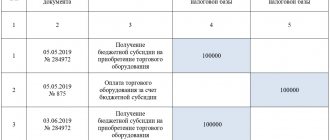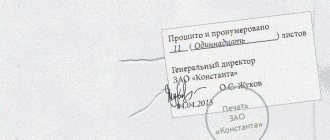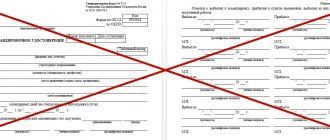Hello everybody! Today we continue the topic of income tax: we wrote about income to calculate this tax, and in this article we will look at expenses. What are they? How does the Tax Code of the Russian Federation classify them? In which articles can you find lists of expenses for each group? What expense accounting features should you keep in mind?
What refers to the income and expenses of an enterprise in accounting
Every commercial company is created for the purpose of making a profit. To derive a financial result, it is necessary to competently organize the correct accounting of the organization’s income and expenses .
The results of the company’s work are of interest not only to its participants, but also to investors, as well as fiscal authorities. At the same time, tax accounting and accounting of income and expenses are somewhat different.
In accounting, the concept and algorithm for accounting for income and expenses are regulated by PBU 9/99 and PBU 10/99, respectively. At the same time, the lists of other income and expenses are open.
The company’s income is an increase in the economic benefits of the organization as a result of the receipt of cash or other assets, as well as the repayment of obligations, resulting in a capital gain (clause 2 of PBU 9/99). There are two types of income: from ordinary activities and others. What applies to each of them can be seen in the table:
| Income | |
| From ordinary activities (clause 5 of PBU 9/99) | Other (clause 7 of PBU 9/99) |
| Revenue from sales of inventory items and services | Proceeds from the sale of OS |
| Other income that is the subject of the main activity of the company | Penalties, penalties and penalties for non-compliance with contractual obligations |
| Assets received as a gift | |
| Income from the lease of company assets | |
| Exchange differences | |
| Overdue creditor | |
| Other income | |
Revenue is shown in accounting if the following conditions are met (clause 12 of PBU 9/99):
- The company has the right to it under an agreement or on the basis of another document.
- The amount of revenue can be determined.
- Ownership of the asset has passed from the seller (performer) to the buyer (customer).
- There is confidence that the company will benefit.
- The costs associated with the operation can be determined.
If the above conditions are not met, a creditor is created in accounting.
The company's expenses are a decrease in the economic benefits of the company resulting from the disposal of cash or other assets of the enterprise, as well as the formation of liabilities that led to a decrease in capital (clause 2 of PBU 10/99).
In accounting, a company's costs are also divided into 2 types: other and from ordinary activities.
| Expenses | |
| From ordinary activities (clause 5 of PBU 10/99) | Other (clause 11 PBU 10/99) |
| Costs associated with production and sales of products | Contributions to valuation reserves |
| Expenses for buying and selling goods | Expenses associated with the disposal of fixed assets |
| Costs associated with the work | Interest transferred by the company under loan agreements |
| Other expenses that are the subject of the company’s activities | Costs associated with the transfer of assets for temporary use |
| Other expenses | |
Clause 16 of PBU 10/99 provides the following factors for accepting costs in accounting:
1. The reasonableness of the costs is confirmed by a certain agreement, legal regulations or business rules.
2. The amount of costs can be identified.
3. The presence of confidence that as a result of this business operation there will be a decrease in the economic benefits of the company.
If at least one of the above conditions is not met, a receivable is recognized in accounting.
There are 2 methods of accounting for income and expenses: cash and accrual methods. The first method is used, as a rule, for simplified taxation.
Find out about the differences in the methods of accounting for income and expenses here.
IMPORTANT! The cash method in accounting can only be used by organizations that use simplified accounting methods and submit simplified accounting reports.
Find out about the nuances of accounting for income and expenses using the cash method in accounting in ConsultantPlus. If you don't have access to the system, get a free trial online.
General expenses requirements
Expenses reduce the tax base for income tax; accordingly, the more expenses we can take into account, the less the amount of tax payable will be. From here it follows a logical conclusion that during audits, tax authorities will primarily check expenses: and if some part of them does not meet the requirements, such expenses will be excluded from the calculation, and the tax will be recalculated upward.
What are these requirements?
We have talked about them more than once:
- Economic feasibility;
- Availability of supporting documentation;
- They must be related to generating income.
All three points are pretty clear until it comes to practice. Small companies have few problems with recognizing expenses; most often they involve the lack of supporting documentation or incorrect documentation. But a large business organization has a lot of questions about recognizing expenses. Situations can be very different; here, again, official explanations from relevant government agencies and a good accountant can help.
Important! In the Tax Code of the Russian Federation, justified expenses are understood as the monetary expression of economically justified expenses. There is no other definition, there is no list of what can be considered reasonable expenses and what cannot be considered. The list of justified expenses is largely determined by the characteristics of the business and the internal organization of the company, so it makes sense in the accounting policy for taxation to independently establish the criteria by which you determine the validity of a particular expense transaction.
Important! There is also no list of documents confirming expenses. It all depends on the specific operation. These can be acceptance certificates for completed work, invoices, agreements with counterparties, payment documents, etc.
All these documents must meet the requirements of the legislative acts of the Russian Federation. If, for example, mandatory details are set for a cash receipt, then all of them must be on the cash receipt. If at least one of them is missing, then the tax authorities have the right to consider the document not properly executed and remove this expense.
Therefore, all primary forms you use, including those that you developed yourself, must also be approved as part of the accounting policy.
Expenses for this tax are recognized in the same way as income, using one of the methods: cash or accrual method.
For some expenses, standards have been established, that is, they are not accepted for taxation in full, but only in some part. This is relevant for entertainment, travel, advertising expenses, as well as expenses for creating certain reserves. Amounts of such expenses that exceed the standards are taken into account at the expense of profit after the tax has been calculated on it.
Income and expenses from a tax point of view
Tax accounting of income and expenses is carried out for the purpose of calculating taxable profit (and some other types of taxes paid under special regimes) and is regulated by Chapter 25 of the Tax Code of the Russian Federation. And if in accounting it is necessary to display absolutely all the company’s business operations, then in the tax office there is a list of income and expenses that cannot be taken into account.
Income is an economic benefit expressed in cash or in kind (Clause 1, Article 41 of the Tax Code of the Russian Federation). Tax accounting provides for 2 types of income: from sales and non-sales. There is also a list of tax-free income.
| Income | Tax-free receipts | |
| From implementation | Non-operating | |
| Revenue from the sale of goods (works and services) both own production and purchased, reduced by the amount of VAT | Income from rental assets | Contributions of participants to the management company |
| Interest received under loan, credit or bank deposit agreements | Advances received | |
| Assets received free of charge (accounted for at market prices, but limited to the residual value of the transferor) | Credits and loans | |
| Surpluses identified during inventory | Property received under agency agreements | |
| Other income listed in Art. 250 Tax Code of the Russian Federation | Other income listed in Art. 251 Tax Code of the Russian Federation | |
Details are in the materials:
- “How to take into account non-operating income when calculating income tax?”;
- "St. 251 of the Tax Code of the Russian Federation (2019-2020) - questions and answers.”
There are special requirements for tax expenses (clause 1 of Article 252 of the Tax Code of the Russian Federation):
- Expenses must be confirmed by a correctly completed primary document.
- It is necessary to justify their economic necessity.
They are divided into costs associated with production and sales and non-sales.
| Expenses | Costs not taken into account when taxing profits | ||||
| Related to production and sales | Non-operating | ||||
| Material (Article 254 of the Tax Code of the Russian Federation) | Salaries (Article 255 of the Tax Code of the Russian Federation) | Depreciation (Articles 256–260 of the Tax Code of the Russian Federation) | Others (Articles 261-264 of the Tax Code of the Russian Federation) | The list consists of 20 types of expenses (Article 265 of the Tax Code of the Russian Federation). These also include those named in Art. 266-267.4 Tax Code of the Russian Federation. | The list of expenses given in Art. 270 Tax Code of the Russian Federation |
Find out how to correctly account for tax expenses in the section “Income Tax Expenses - List”.
To determine tax profit, it is necessary to make a separate calculation, displaying information on income and expenses taken into account in the tax base in special tax registers. The object of taxation is profit, which is calculated by reducing income by the amount of expenses.
If you have access to ConsultantPlus, check whether you correctly account for income and expenses in tax accounting. If you don't have access, get a free trial of online legal access.
Standardized costs
Standardized expenses in tax accounting - such expenses are not included in the current classification, but they also occur. Thus, expenses in this category include those transactions that can be combined according to a general principle: standards have been approved for their recognition in tax accounting. In other words, costs can only be taken into account in a certain amount, but not more than the regulatory limit.
For example, entertainment expenses can be taken into account in the amount of 4% of labor costs for the same period. The costs of voluntary personnel insurance are no more than 12% of labor costs. Some advertising costs are up to 1% of sales revenue.
Principles of accounting for income and expenses of an organization
In accounting, the following basic principles of accounting for a company’s income and expenses are distinguished:
- The principle of objectivity - all business transactions must be reflected in accounting using the continuous entry method in the accounts provided for in the chart of accounts in ruble equivalent.
- The principle of double entry - any movement of the company's assets and liabilities is reflected simultaneously in the debit of one account and in the credit of another based on primary documentation.
- Accrual principle - information is displayed in accounting as it occurs in the reporting period in which it was made, and not upon payment.
- The principle of correspondence - the income of an enterprise must be correlated with expenses.
Tax legislation provides for the following principles for accounting for company income and expenses:
- The principle of continuity - accounting of income and expenses is carried out continuously from the moment of registration of the company until the date of its deregistration.
- The principle of time certainty - allows you to take into account income and expenses both on a cash basis and on an accrual basis.
- The principle of consistency indicates that tax accounting rules and regulations are consistently applied from one tax period to another.
- The principle of validity of recognition of income and expenses implies that the taxpayer makes economically justified and documented expenses and, if necessary, will be able to prove their validity in accordance with legislative norms (or business turnover).
- The principle of uniform recognition of income and expenses helps to distribute expenses evenly if the contract provides for the receipt of income over more than one reporting period, and there is no stage-by-stage delivery of goods (work, services).
Direct and indirect income tax expenses: list
Costs are divided into direct and indirect based on their connection with production. The general procedure for such division is enshrined in Art. 318 Tax Code of the Russian Federation.
Thus, direct costs include material costs, wages of production personnel and depreciation of production assets. All other costs are indirect.
The company determines the specific list of direct expenses independently.
Read about how to do this here .
Proper allocation of expenses is extremely important because the period for recognizing direct expenses is completely different than indirect expenses. This means that an error in qualification can lead to incorrect allocation of expenses between periods, underestimation of the tax base in one of them and overpayment of tax in another. That is why we did not limit ourselves to just one material on this topic.
Another article on our site is devoted to the division of costs into direct and indirect.
Looking ahead a little, we note that you should divide expenses into direct and indirect, taking into account the specifics of your activity and economic justification. Otherwise, tax authorities will recalculate the tax as they see fit, and, most likely, they will prove their case in court.
See, for example, “Rent of industrial premises may not be recognized as an indirect expense .
Algorithm for accounting for company income and expenses
Accounting for income and expenses of an organization is carried out on the basis of the Law “On Accounting” dated December 6, 2011 No. 402-FZ, no.
Accounting for income and expenses is carried out using the double entry method using the corresponding accounts approved by order of the Ministry of Finance dated 31.10.2000 No. 94n. Analytics is carried out for each type of income and expense with the ability to identify the financial result for each operation.
To summarize information about income and expenses received from ordinary activities, the chart of accounts provides for account 90 “Sales”, to which the main sub-accounts are opened:
- 90.1 “Revenue” - for accounting for income recognized as revenue;
- 90.2 “Cost” - for cost accounting;
- 90.3 “VAT” - to account for tax due from buyers;
- 90.4 “Excise taxes” - for accounting for amounts of excise taxes (and also applicable when selling excise goods).
To account for other expenses, organizations can open other subaccounts to account 90.
To determine the financial result, which represents the difference between revenue and self-worth, subaccount 90.9 “Profit/loss from sales” is used. At the end of each month, the results of the company’s work are displayed by comparing debit turnover on subaccounts opened for accounting for expenses and other “negative” items (90.2-90.8ٜ), with credit turnover on subaccount 90 ٜ.1ٜ. The identified amount is written off by posting Dt 90.9 Kt 99 in case of excess of income over expenses or Dt 99 Kt 90.9 - in case of a loss. The sum of the subaccounts accumulates during the year, at the end of which they are closed internally:
Dt 90.1 Kt 90ٜ.9 - written off to the “Revenue” subaccount;
Dt 90.9 Kt 90ٜ.2 (90.3, 90.4...) - written off including subaccounts of costs, VAT and other items that reduce revenue.
To account for other income and expenses, account 91 “Other income and expenses” is used, to which the following subaccounts are opened:
- 91.1 “Other income” - for accounting for income not related to the main type of activity;
- 91.2 “Other expenses” - to account for other costs;
- 91.9 “Balance of other income and expenses” - to identify profit/loss from transactions related to other types of activities.
Similar to accounting for income and expenses from ordinary activities, the accountant at the end of the month compares the balance of accounts 91.1 and 91.2 and writes off the resulting result by posting Dt 91.9 Kt 99 - upon receipt of profit or Dt 99 Kt 91.9 - loss at the end of the month. Subaccounts are closed at the end of the year using internal transactions.
Tax accounting of income and expenses, as mentioned earlier, has some differences from accounting.
Example
entered into a car rental agreement with a company employee, according to which the monthly rent is 7,500 rubles. The car's engine capacity is less than 2,000 cm3.
When calculating taxable profit, you can take into account no more than 1,200 rubles. (Subclause 11, Clause 1, Article 264 of the Tax Code of the Russian Federation). That is, in accounting expenses it will be reflected in 6,300 rubles. (7,500 – 1,200) more costs than in the tax office. Tax accounting analytics can be displayed as follows:
| Check | Sum | Analytics |
| NU 91.2 “Other expenses” | 1 200 | Expenses accepted for tax purposes |
| 6 300 | Expenses not taken into account when calculating profit |
In this case, a permanent tax liability is formed, which is reflected in accounting by posting Dt 99 Kt 68 - 6,300 rubles.
Between tax accounting (TA) and accounting (BU), when recording certain incomes and expenses, not only permanent but also temporary differences can arise. This means that the event is displayed in accounting earlier (later) than in tax accounting.
The rules for accounting for permanent and temporary differences are shown in the table below.
| Permanent differences (between NU and BU arise in the same tax period) | ||
| Sign | Profit in BU is higher than in NU | In BU the profit is less than in NU |
| Consequence | Permanent tax liability (PNO) | Permanent tax asset (PTA) |
| Tax nuances | Conditional consumption | Conditional income |
| Wiring | Dt 99 Kt 68 | Dt 68 Kt 99 |
| Temporary differences (between BU and NU arise in different tax periods) | ||
| Sign | In NU profit is recognized earlier than in accounting | In accounting, profit is recognized earlier than in NU |
| Consequence | Deductible Temporary Difference (DTD) | Taxable temporary difference (TDT) |
| Tax nuances | Deferred tax asset (DTA) | Deferred tax liability (DTL) |
| Wiring | Dt 09 Kt 68 - form; Dt 68 Kt 09 - repay | Dt 68 Kt 77 - form; Dt 77 Kt 68 - repay |
More details about the algorithm for accounting for permanent and temporary differences can be found in the material “Differences between accounting and tax accounting.”
Tax accounting can be kept separately from accounting (most often this method is chosen by large companies) or on the basis of accounting data highlighting tax differences (this method is usually chosen by small taxpayers). In any case, correct tax and accounting management according to “double standards” is only possible using automated systems.
When to transfer money to the budget
If the reporting periods are a quarter, half a year and nine months, then advance payments based on the results of the reporting periods are made no later than April 28, July 28 and October 28, respectively. The monthly advance payment for January should be transferred no later than January 28, for February - no later than February 28, and so on until December inclusive.
If the company makes advance payments based on actual profits, then the advance payment for January is made no later than February 28, for January-February - no later than March 28, and so on, until January 28 of the next year.
Regardless of the chosen method of calculating advance payments, at the end of the calendar year, the accountant displays the total amount of income tax for the past year. Then he compares it with the amount of advance payments accrued at the end of the reporting periods. If the total amount of advance payments is less than the final tax amount, the company pays the difference to the budget. If there is an overpayment, the accountant will take it into account in the following periods. The total amount of income tax must be paid no later than March 28 of the following year.
Automatically generate a tax payment invoice based on the data from the declaration and submit reports via the Internet
Program for accounting income and expenses
Today, the market is replete with a variety of software that allows you to keep track of an organization’s income and expenses. The most popular among them is the 1C-Enterprise program. The latest versions allow you to take into account a large amount of information and work with several users simultaneously. The program has various modules with an intuitive interface. The manufacturer monitors all legislative changes and releases the necessary updates in a timely manner. The disadvantage of this software is its significant cost, as well as the need to pay for the services of service specialists.
As for free programs for recording income and expenses, they can be downloaded on the Internet, but with limited functionality.
Conclusion
Expenses taken into account when calculating the income tax base on the general taxation system must be confirmed, economically justified and aimed at generating income.
Most LLCs must use the accrual method of accounting for expenses, but some microbusinesses have the right to use the cash method.
To correctly calculate the tax base of an LLC on OSNO, you should carefully study the provisions of the Tax Code of the Russian Federation and the clarifications of the Ministry of Finance to determine whether certain costs can be taken into account. Otherwise, the tax base will be underestimated, which will entail unnecessary attention from the tax inspectorate.
To correctly calculate taxes, fill out reports, and receive expert advice, register in the “My Business” service.
Results
The purpose of accounting and tax accounting is to generate complete and reliable information about the financial position of an enterprise to provide it to interested internal and external users. Organization of correct accounting of income and expenses is the most important aspect of the activities of enterprises of any scale.
Fiscal authorities pay close attention to the procedure for accounting for income and expenses by taxpayers. At the same time, tax accounting differs significantly from accounting, and therefore accountants have to develop additional accounting registers.
Sources:
- Tax Code of the Russian Federation
- PBU 10/99, approved. by order of the Ministry of Finance of Russia dated May 6, 1999 N 33n
- PBU 9/99, approved. by order of the Ministry of Finance of Russia dated May 6, 1999 N 32n
You can find more complete information on the topic in ConsultantPlus. Free trial access to the system for 2 days.
Recognition of expenses for basic assets
LLC expenses can be taken into account under the general taxation system in two ways.
The first of these is the accrual method, which in practice is often called “shipment-based” accounting. ( Article 272 of the Tax Code of the Russian Federation ). This is the most common accounting option as it can be used by all organizations without restrictions.
With the accrual method, costs are taken into account in the period in which they are incurred, regardless of the transfer of money.
The second method is the cash method, or “on payment” accounting. On the contrary, it depends on the movement of money , because Expenses are recognized in the period in which actual payment is made.
However, the cash method is not available to all LLCs. According to paragraph 1 of Art. 273 of the Tax Code of the Russian Federation, only those companies that:
- over the past 4 quarters, they received revenue of no more than 1 million rubles. in each;
- do not belong to credit institutions;
- do not engage in hydrocarbon production;
- are not controlling persons of foreign companies.
The difference between the two cost recognition methods is easy to understand using the example of payroll accounting.
Example
The employee's salary accrued for October amounted to 50 thousand rubles. At the same time, an advance payment in the amount of 20 thousand rubles. paid in October, and the final payment (30 thousand rubles) - in November. When using the accrual method, all 50 thousand rubles. will be included in the company's expenses for October. And with the cash method in October, only 20 thousand rubles will be written off as expenses, and the remaining 30 thousand rubles. will be included in November costs.
Compensation payments
Situation: can a sports club take into account compensation paid to another club under a transfer contract? Was the contract concluded in connection with the athlete’s transfer to another club?
Yes maybe.
When a professional football player moves from one club to another, a transfer contract is concluded between the clubs. It, in particular, stipulates the conditions and amount of mandatory compensation payments associated with the transfer of a football player. This is stated in Article 18 of the Regulations, approved by Resolution of the Executive Committee of the Russian Football Union dated March 5, 2011 No. 141/4.
The expenses that the club incurs in connection with the conclusion of a transfer contract are considered non-operating. When calculating income tax, they should be taken into account on the basis of subparagraph 20 of paragraph 1 of Article 265 of the Tax Code of the Russian Federation. The tax treatment of these expenses depends on the type of transfer contract.
A transfer contract can be one-time or ongoing (on a loan basis).
In the first case, the club for which the athlete previously played terminates his employment contract and receives a one-time compensation for this. From this moment, the transaction is considered completed, therefore the paid compensation can be included in expenses at a time in the reporting (tax) period to which it relates (paragraph 1, clause 1, article 272 of the Tax Code of the Russian Federation).
In the second case, the transfer contract includes elements of a lease agreement. A mandatory condition of such a contract is the return of the player to his former club upon expiration of the contract. If this period covers several reporting (tax) periods for income tax, the compensation paid should be written off as expenses evenly throughout the entire rental period of the football player (paragraph 3, clause 1, article 272 of the Tax Code of the Russian Federation).
A similar point of view is shared by the Russian Ministry of Finance in letter dated March 22, 2006 No. 03-03-04/1/272.
Situation: is it possible to take into account the personal income tax compensation that an organization pays to citizens who receive new housing from it in connection with the demolition of their residential buildings on a land plot?
No you can not.
When receiving new housing free of charge, a citizen receives income in kind, the amount of which is determined as the market value of the new housing. This follows from the provisions of paragraph 1 of Article 210 and paragraph 1 of Article 211 of the Tax Code of the Russian Federation.
The source of income payment is the developer organization, which at its own expense provides the citizen with new housing. In this situation, the developer organization is recognized as a tax agent for personal income tax. Consequently, she is obliged to withhold and transfer to the budget the amount of this tax calculated from the market value of new housing (clause 1 of Article 226 of the Tax Code of the Russian Federation).
If an organization does not pay a citizen income in cash, it is impossible to withhold personal income tax from the cost of housing. In this case, the tax agent is obliged to inform the tax inspectorate at the place of his registration within a month (clause 5 of Article 226 of the Tax Code of the Russian Federation).
If personal income tax was not withheld by the tax agent, the citizen must pay it independently at his own expense. This follows from the provisions of paragraphs 1 and 2 of Article 45 of the Tax Code of the Russian Federation (determination of the Constitutional Court of the Russian Federation of January 22, 2004 No. 41-O). Moreover, the payment of personal income tax at the expense of tax agents is expressly prohibited by law (clause 9 of Article 226 of the Tax Code of the Russian Federation, letter of the Federal Tax Service of Russia for Moscow dated November 22, 2007 No. 28-11/111282). Payment of additional compensation, with which the developer covers citizens' expenses for paying personal income tax on the cost of housing received free of charge, essentially means a violation of this requirement.
The costs of purchasing housing for resettled citizens are included in the initial cost of new construction (clause 5 of article 270 and clause 1 of article 257 of the Tax Code of the Russian Federation, letter of the Ministry of Finance of Russia dated January 25, 2006 No. 03-03-04/1/56, dated February 20, 2007 No. 03-03-06/1/103, dated February 27, 2006 No. 03-03-04/1/145). After putting a new facility into operation, they will reduce the taxable profit of the developer organization through depreciation. However, when forming the initial cost of a new construction project, the organization has the right to take into account only those expenses that meet the criteria established by Article 252 of the Tax Code of the Russian Federation. These expenses must be economically justified, documented and related to activities aimed at generating income. It is impossible to recognize compensation as such expenses, the purpose of which is to illegally exempt citizens from paying personal income tax at their own expense.
Thus, if an organization reimburses displaced citizens for the cost of paying personal income tax on the cost of housing provided free of charge, this compensation cannot be taken into account when calculating income tax.
Situation: when calculating income tax, is it possible to include interest on a monetary obligation in expenses if the agreement does not specify the procedure for their calculation?
Yes, you can, if the contract does not contain the instruction: “no interest to be charged.”
Debtors (buyers, customers) are obliged to pay creditors (sellers, executors) legal interest on monetary obligations. This is a fee for using the lender's money.
Interest is called legal because the right to receive it is directly provided for by the Civil Code of the Russian Federation and does not require confirmation of this in contracts. For example, under a contract for the sale of goods, the obligation to pay legal interest by default will arise from the buyer if he pays for the goods after shipment: the next day or later.
If the parties initially agree not to accrue legal interest, then the contract says: “legal interest is not accrued” or “interest on monetary obligations is not accrued.” Of course, you also won’t have to pay interest if no debt has arisen. For example, if the buyer paid for the goods on the day of shipment.
How to calculate interest when the contract is silent about waiving it
When there is no express clause in the contract that interest is not accrued, the debtor determines the amount of interest for the entire period of use of the creditor's funds. The calculation is based on the refinancing rates in force during this period. That is, changes in rates must be taken into account.
Interest is calculated on the entire amount of the debt from the next day after its occurrence until the day of its repayment, inclusive. It does not matter whether the payment is overdue or not. For example, under a purchase and sale agreement, determine the period for calculating legal interest (by default) as follows:
| Condition in the contract | Execution of obligations | Period for calculating legal interest |
| Pay for the goods within five calendar days from the date of shipment | paid on the day of shipment | 0 days (no interest accrued) |
| paid on the fifth calendar day from the date of shipment | 5 days | |
| paid on the 10th calendar day from the date of shipment | 10 days (including 5 days of delay) |
This follows from the provisions of Article 317.1 of the Civil Code of the Russian Federation.
How to take interest into account when calculating income tax
When calculating income tax, include the amount of accrued legal interest as part of non-operating expenses. These are normal expenses in the form of interest on debt obligations.
Under the accrual method, recognize interest as an expense for the month to which it relates. Possible options for recognizing income depending on the actions of the debtor, see the table:
| Interest payment procedure | At what point should interest be calculated and recognized as an expense? |
| The debtor repays the debt over a long period of time (more than one month) | Until the debt is repaid, interest is recognized on the last day of each month. Interest for the last month is recognized on the day of full repayment of the debt |
| The debtor does not pay interest in principle | On the last day of every month |
Under the cash method, include legal interest on a monetary obligation as an expense at the time it is actually paid.
This follows from the provisions of subparagraph 2 of paragraph 1 of Article 265, paragraphs 1 and 8 of Article 272, paragraph 3 of Article 273 of the Tax Code of the Russian Federation. Similar clarifications are contained in letters from the Ministry of Finance of Russia dated December 9, 2015 No. 03-03-RZ/67486 and the Federal Tax Service of Russia dated March 4, 2021 No. SD-4-3/3618.
An example of how to take into account legal interest on a monetary obligation as an expense when calculating income tax
In February 2021, a contract for the supply of furniture sets was concluded between Hermes LLC and Alpha LLC. Under the terms of the agreement, Alpha is obliged to pay 100 percent of the cost of the goods within five calendar days after shipment. There is no clause in the agreement that legal interest is not accrued.
Delivery of five headsets for a total amount of RUB 1,180,000. (including VAT - 180,000 rubles) is scheduled for February 5.
On February 5, Hermes shipped the goods. Alpha paid for the goods on May 10.
The refinancing rate for the period from February 5 to May 10 is 11 percent.
Alpha pays income tax monthly and uses the accrual method.
The amount of legal interest was:
- 8535 rub. (RUB 1,180,000 × 11%: 365 days × 24 days) – for February;
- RUB 11,024 (RUB 1,180,000 × 11%: 365 days × 31 days) – for March;
- RUB 10,668 (RUB 1,180,000 × 11%: 365 days × 30 days) – for April;
- 3556 rub. (RUB 1,180,000 × 11%: 365 days × 10 days) – for May.
When calculating income tax, Alpha’s accountant included the corresponding amount of interest in non-operating expenses on the last day of each month (February 29, March 31, April 30). Interest for the last month (May) in the amount of 3556 rubles. The accountant took into account the day the debt was fully repaid (May 10).










